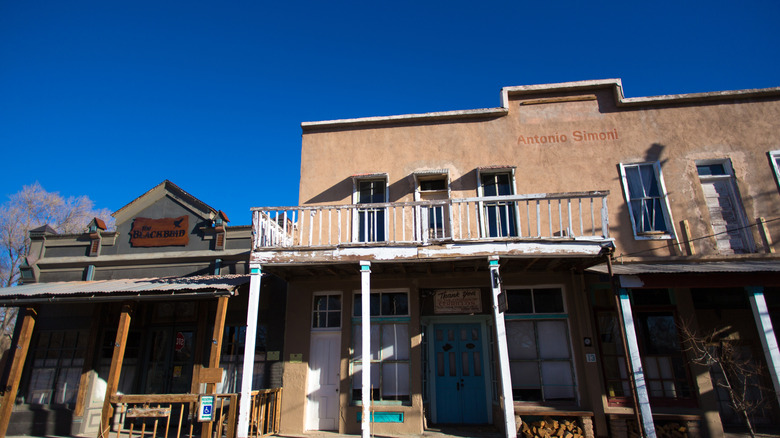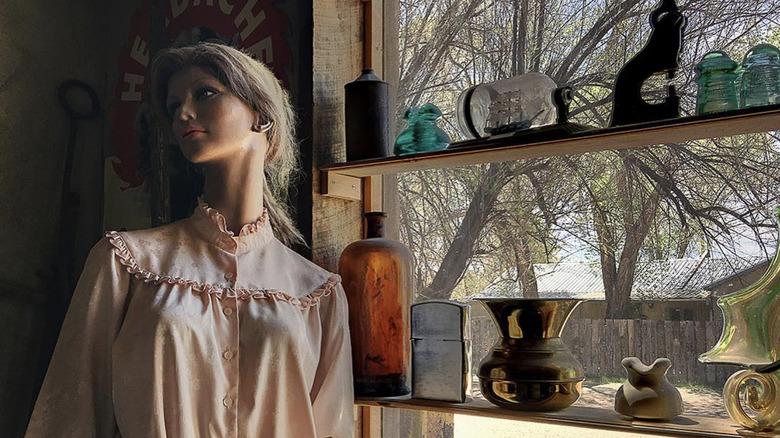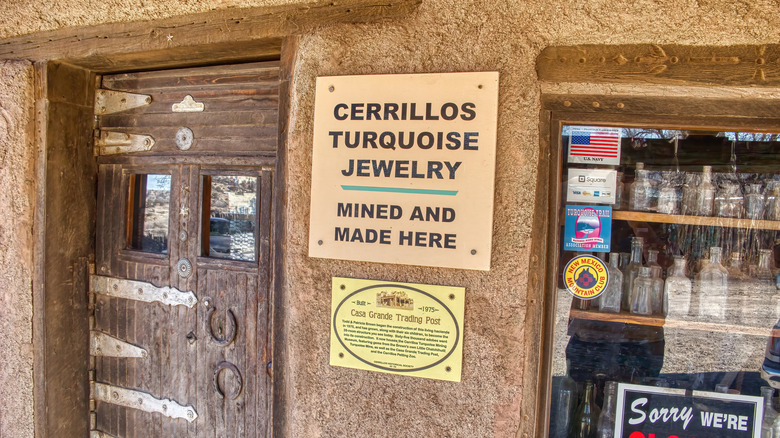Situated Between Albuquerque And Santa Fe Is New Mexico's Near-Ghost Town With Shops, Art, And Historic Charm
Between Albuquerque and Santa Fe is the Turquoise Trail, a roundabout, scenic, and relatively quiet route that runs through the wild New Mexico landscape, connecting a chain of near-ghost towns. The blue-green gem that New Mexico has come to be known for has been mined for centuries along this national scenic byway, which runs through Golden, Madrid, and Cerrillos. On that route, Cerrillos is a shadow of what it once was, but in it, you'll still find a vibrant scene made up of shops, art, history, and lots of turquoise.
On Highway 14 (the Turquoise Trail), Cerrillos is 25 miles from Santa Fe and 50 miles from Albuquerque by car. A true Wild West destination within a stone's throw of one of the best film cities in America. It's a common stop on the way from one city to the other, but an easy 30 minutes to an hour trip to visit if you're vacationing nearby. Just before you hit Cerrillos, if coming from Albuquerque, you'll pass through Madrid, another tiny town boasting charm, art, and cuisine that is well worth the stop. This is not a destination to plan a night in, but it will be the spot you remember getting out, exploring, and having a beer in long after your trip has ended.
Explore the remains of an old mining town
Today, Cerrillos is almost like a ghost town, with a population of only about 260 remaining, but the outline of a true Old West town remains. On your way through the historic district, you'll see some dilapidated houses melting into the overgrown landscape, mixed in with maintained classic Western storefronts, churches, and homes. In its prime, the area around Cerrillos was used for mining. Gold, silver, lead, and coal were all extracted from the area, but turquoise quickly became the town's main export.
Visitors today can sift through hundreds of tools and artifacts from the town's mining days in the Cerrillos Turquoise Mining Museum, which is located in the town's Casa Grande Trading Post. Back then, this was the site of the old Palace Hotel, which housed famous visitors like Thomas Edison before the location burned down in 1968. Like many towns in the Old American West during the gold rush, there wasn't much in the way of longevity, but turquoise has maintained its pull with locals and visitors alike.
A hub for southwest art and jewelry
In Cerrillos, shops, art galleries, saloons, and even a petting zoo are on the table, but local New Mexican art and jewelry steal the show. All along the Turquoise Trail, you'll find small galleries propping up local artists, many of whose work focuses on the New Mexican landscape and wildlife; this is no surprise given its proximity to Santa Fe, a city world-renowned as an artsy cultural paradise out west. At Cerrillos' Seftel Gallery, owned and operated by the artist, Paul Seftel's work focuses primarily on the Southwest landscapes he works out of.
Turquoise has been instrumental in Cerrillos since the town's formation. First mined by the Pueblo people in A.D. 900, the gem holds religious significance to several indigenous groups, who utilized it in jewelry and pottery. A major economic and artistic resource to settlers and modern residents, today, you'll still find locally sourced turquoise sold in town, often in the form of necklaces, rings, brooches, and earrings. At Cerrillos Station, you can browse handmade jewelry, artwork, and other gifts in addition to a Farmer's Market held every Thursday afternoon.


